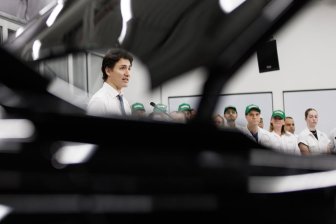Ontario has passed legislation to create a cap-and-trade system to fight climate change, which comes into effect Jan. 1, 2017.

What is cap-and-trade?
Under the program, industries and businesses are given specific pollution limits, but can sell their emission allowances to other companies if they come in below their annual limit, or buy credits if they exceed it.
READ MORE: Ontario premier reflects on hydro, road tolls and cap-and-trade ahead of 2018 election
Under this new legislation, natural gas providers, for example, must buy emission allowances for the amount used by residential and business customers. These “recovery” costs will then be passed on to consumers.
What cap-and-trade means for homeowners?
The cap-and-trade is expected to cost about 3.3 cents per cubic metre (m3) of natural gas used in 2017.
The cost will depend on how much gas you use, but for the average Ontario household, the additional annual expense is estimated to be about $70 to $80 in 2017.
READ MORE: Ontario auditor general report reveals cap and trade to cost $8B in first years
According to Enbridge Gas, a typical residential customer uses about 2,400 cubic metres of natural gas a year for home and water heating.
Based on a cap-and-trade rate of 3.3 cents/m3, a typical residential customer would pay $6.70 on average per month for a total annual bill impact of about $80.
- Canadian man dies during Texas Ironman event. His widow wants answers as to why
- On the ‘frontline’: Toronto-area residents hiring security firms to fight auto theft
- Honda’s $15B Ontario EV plant marks ‘historic day,’ Trudeau says
- Canadians more likely to eat food past best-before date. What are the risks?
What cap-and-trade means for businesses?
Facilities, plants and natural gas distributors with emissions of 25,000 tonnes or more of greenhouse gas emissions per year are required by law to participate in the program. They will be required to buy their own emission allowances.
READ MORE: Ontario Chamber of Commerce urges one-year delay on cap-and-trade plan
Businesses generating more than 10,000 tonnes but less than 25,000 tonnes of emissions may choose to opt into the program.
What cap-and-trade means for motorists?
Gasoline will cost about 4.3 cents a litre more in 2017 as a result of the cap-and-trade program.
How will cap-and-trade affect electricity costs?
The Ontario government says cap-and-trade will not make your electricity more expensive. The consumption of electricity is 90 per cent emissions-free partly due to the province’s plan to phase out coal-fired power generation.
However, due to the rising cost of electricity, as reported extensively by Global News, Ontario is removing the eight per cent provincial share of the Harmonized Sales Tax on bills as of Jan. 1.
This is expected to result in savings of $130 for the average household per year. Rural ratepayers could receive additional relief resulting in $540 a year in savings.







Comments